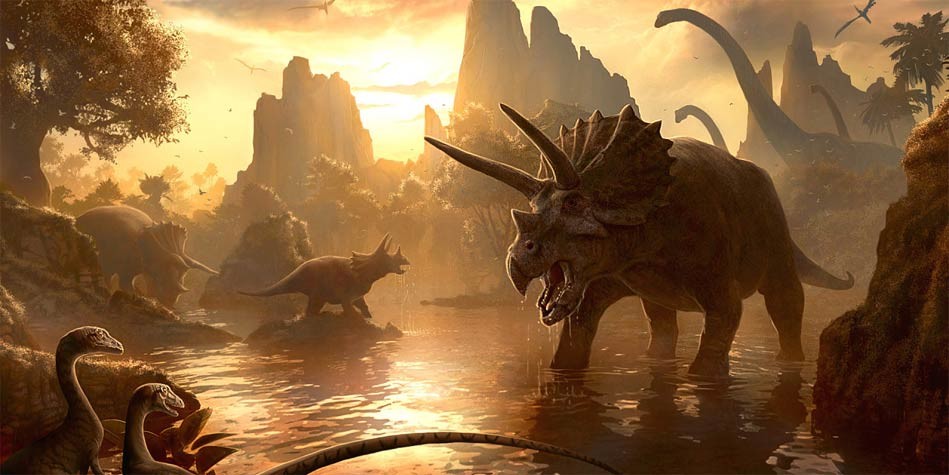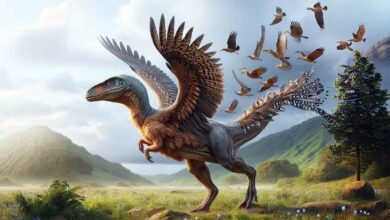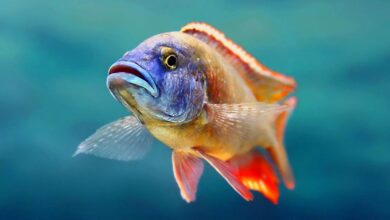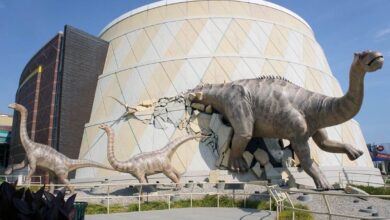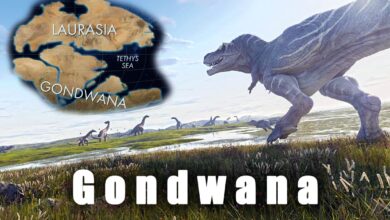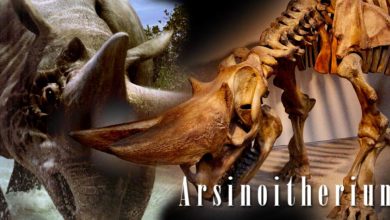The longest and largest ceratopsians
The longest and largest ceratopsians Top 10
Triceratops is by far the best-known ceratopsians
Ceratopsia or Ceratopia (Greek: “horned faces”) is a group of herbivorous, beaked dinosaurs, which thrived in what are now North America, Europe, and Asia, during the Cretaceous Period, although ancestral forms lived earlier, in the Jurassic. The earliest known ceratopsian, Yinlong downsi, lived between 161.2 and 155.7 million years ago. The last ceratopsian species became extinct in the Cretaceous–Paleogene extinction event, 65.5 million years ago.
Ceratopsians ranged in size from 1 meter (3 ft) and 23 kilograms (50 lb) to over 9 meters (30 ft) and 5,400 kg (12,000 lb).
The longest and largest ceratopsians
- Eotriceratops xerinsularis: 8.5–9 m
- Triceratops horridus: 8–9 m
- Torosaurus latus: 8–9 m (26–30 ft)
- Triceratops prorsus: 7.9–9 m (26–30 ft)
- Titanoceratops ouranos: 6.8–9 m (22–30 ft)
- Ojoceratops fowleri: 8 m (26 ft)
- Coahuilaceratops magnacuerna: 8 m (26 ft)
- Pentaceratops sternbergii: 6–8 m (20–26 ft)
- Pachyrhinosaurus canadensis: 6–8 m (20–26 ft)
- Pachyrhinosaurus lakustai: 5–8 m (16–26 ft)
- Nedoceratops hatcheri: 7.6 m (25 ft)
- Sinoceratops zhuchengensis: 7 m (23 ft)
- Mojoceratops perifania: 7 m (23 ft)
- Utahceratops gettyi: 6–7 m (20–23 ft)
- Chasmosaurus belli: 4.8–7 m (16–23 ft)
- Vagaceratops irvinensis: 4.5–7 m (15–23 ft)
- Arrhinoceratops brachyops: 4.5–7 m (15–23 ft)
- Agujaceratops mariscalensis: 4.3–7 m (14–23 ft)
- Chasmosaurus russelli: 4.3–7 m (14–23 ft)

The longest and largest ceratopsians
AD 2020 update
| No | Dinosaur | Length [m] | Length [ft] |
| 1 | Triceratops maximus | 9.2 m | 30.2 ft |
| 2 | Ugrosaurus olsoni | 8.6 m | 28.2 ft |
| 3 | Triceratops horridus | 8.5 m | 27.9 ft |
| 4 | Eotriceratops xerinsularis | 8.4 m | 27.6 ft |
| 5 | Triceratops prorsus | 8.4 m | 27.6 ft |
| 6 | Triceratops albertensis | 8.3 m | 27.2 ft |
| 7 | Torosaurus latus | 8.0 m | 26.2 ft |
| 8 | Sinoceratops zhuchengensis | 7.8 m | 25.6 ft |
| 9 | “Duranteceratops” | 7.4 m | 24.3 ft |
| 10 | Triceratops sulcatus | 7.2 m | 23.6 ft |
| 11 | Pachyrhinosaurus canadensis | 6.9 m | 22.6 ft |
| 12 | Titanoceratops ouranos | 6.8 m | 22.3 ft |
| 13 | Agathaumas sylvestris | 6.2 m | 20.3 ft |
| 14 | Albertaceratops nesmoi | 6.2 m | 20.3 ft |
| 15 | Utahceratops gettyi | 6.2 m | 20.3 ft |
| 16 | Centrosaurus apertus | 6.1 m | 20.0 ft |
| 17 | Styracosaurus ovatus | 6.1 m | 20.0 ft |
| 18 | Achelousaurus horneri | 6.0 m | 19.7 ft |
| 19 | Bravoceratops polyphemus | 6.0 m | 19.7 ft |
| 20 | Nedoceratops hatcheri | 6.0 m | 19.7 ft |
| 21 | Ojoceratops fowleri | 6.0 m | 19.7 ft |
| 22 | Torosaurus utahensis | 6.0 m | 19.7 ft |
| 23 | Chasmosaurus belli | 5.9 m | 19.4 ft |
| 24 | Pentaceratops sternbergii | 5.8 m | 19.0 ft |
| 25 | Triceratops flabellatus | 5.8 m | 19.0 ft |
| 26 | Agujaceratops mariscalensis | 5.7 m | 18.7 ft |
| 27 | Chasmosaurus russelli | 5.7 m | 18.7 ft |
| 28 | Pachyrhinosaurus lakustai | 5.7 m | 18.7 ft |
| 29 | Medusaceratops lokii | 5.6 m | 18.4 ft |
| 30 | “Monoclonius” recurvicornis | 5.6 m | 18.4 ft |
| 31 | Styracosaurus albertensis | 5.6 m | 18.4 ft |
| 32 | Triceratops eurycephalus | 5.6 m | 18.4 ft |
| 33 | Coronosaurus brinkmani | 5.5 m | 18.0 ft |
| 34 | Triceratops serratus | 5.5 m | 18.0 ft |
| 35 | Anchiceratops ornatus | 5.4 m | 17.7 ft |
| 36 | “Monoclonius” lowei | 5.4 m | 17.7 ft |
| 37 | Spiclypeus shipporum | 5.3 m | 17.4 ft |
| 38 | Spinops sternbergorum | 5.3 m | 17.4 ft |
| 39 | Mercuriceratops gemini | 5.2 m | 17.1 ft |
| 40 | Pachyrhinosaurus perotorum | 5.2 m | 17.1 ft |
| 41 | Chasmosaurus brevirostris | 5.1 m | 16.7 ft |
| 42 | “Monoclonius” dawsoni | 5.1 m | 16.7 ft |
| 43 | Agujaceratops mavericus | 5.0 m | 16.4 ft |
| 44 | Coahuilaceratops magnacuerna | 5.0 m | 16.4 ft |
| 45 | Monoclonius crassus | 5.0 m | 16.4 ft |
| 46 | Monoclonius nasicornus | 5.0 m | 16.4 ft |
| 47 | “Monoclonius” sphenocerus | 5.0 m | 16.4 ft |
| 48 | Regaliceratops peterhewsi | 5.0 m | 16.4 ft |
| 49 | Wendiceratops pinhornensis | 5.0 m | 16.4 ft |
Characteristics
Ceratopsia is an order of dinosaurs that includes the well-known triceratops. These dinosaurs are characterized by their unique skulls, which feature a variety of bony horns and frills. They lived during the Cretaceous period, and were herbivores. Many ceratopsians had large bodies and were quite heavily built, with thick legs and sturdy, hoof-like feet. They are believed to have used their horns and frills for defense against predators, and possibly for display purposes as well. Ceratopsians are known to have inhabited what is now North America, and some species are also known to have lived in Asia and Europe.
Ceratopsia is a diverse group of dinosaurs that includes a wide range of species, ranging in size from relatively small to quite large. Some of the smaller ceratopsians, such as Protoceratops, were about the size of a sheep, while larger species like Triceratops could reach lengths of up to 30 feet and weigh up to 12 tons.
One of the most distinctive features of ceratopsians is their skull, which was typically long and wide, with a variety of bony protuberances, including horns and frills. The horns and frills served a variety of purposes, including defense against predators, display during mating rituals, and possibly for intraspecific aggression.
In addition to their skulls, ceratopsians also had other unique physical characteristics. They had strong, sturdy legs and hoof-like feet, which they used to support their large bodies. They were herbivores and likely used their sharp, beak-like jaws to tear off and grind up plant material.
Overall, ceratopsians were an important and diverse group of dinosaurs that played a significant role in the ecosystems of their time.
Taxonomy
Ceratopsia is a group of dinosaurs that belongs to the suborder Ornithischia. Within the suborder Ornithischia, ceratopsians are classified as part of the infraorder Ceratopsomorpha, which also includes the pachycephalosaurids. The order Ceratopsia includes several families, including Ceratopsidae, which includes the well-known Triceratops, and Protoceratopsidae, which includes the smaller Protoceratops.
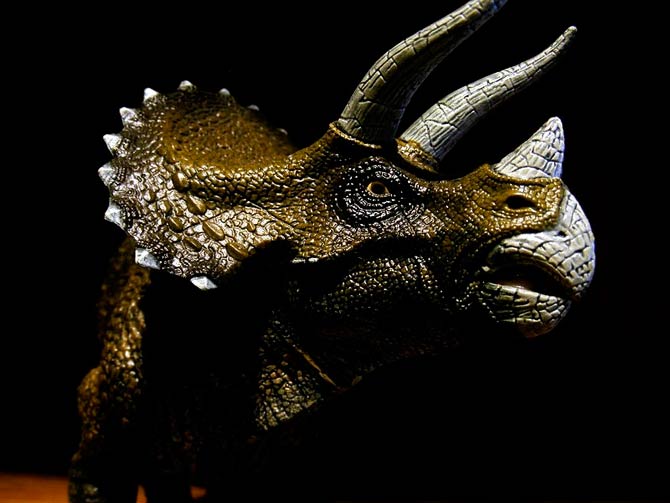
Recommended
- The heaviest ceratopsians TOP 10
- Dinosaurs
- Dinosaurs database
- Predatory dinosaurs
- Animals & dinosaurs records
- The longest dinosaurs. Sauropods Top 10
- The heaviest dinosaurs – Top 10
- The longest predatory dinosaurs. Theropods Top 10
- The heaviest predatory dinosaurs Top 10
- The longest and largest ornithopods
- The heaviest ornithopods Top 10
- The longest and largest ceratopsians
- The smallest dinosaurs Top 10
- The smallest sauropods Top 10
- The largest pterosaurs Top 10
- The fastest animals – Top 100
- The fastest birds – Top 10

